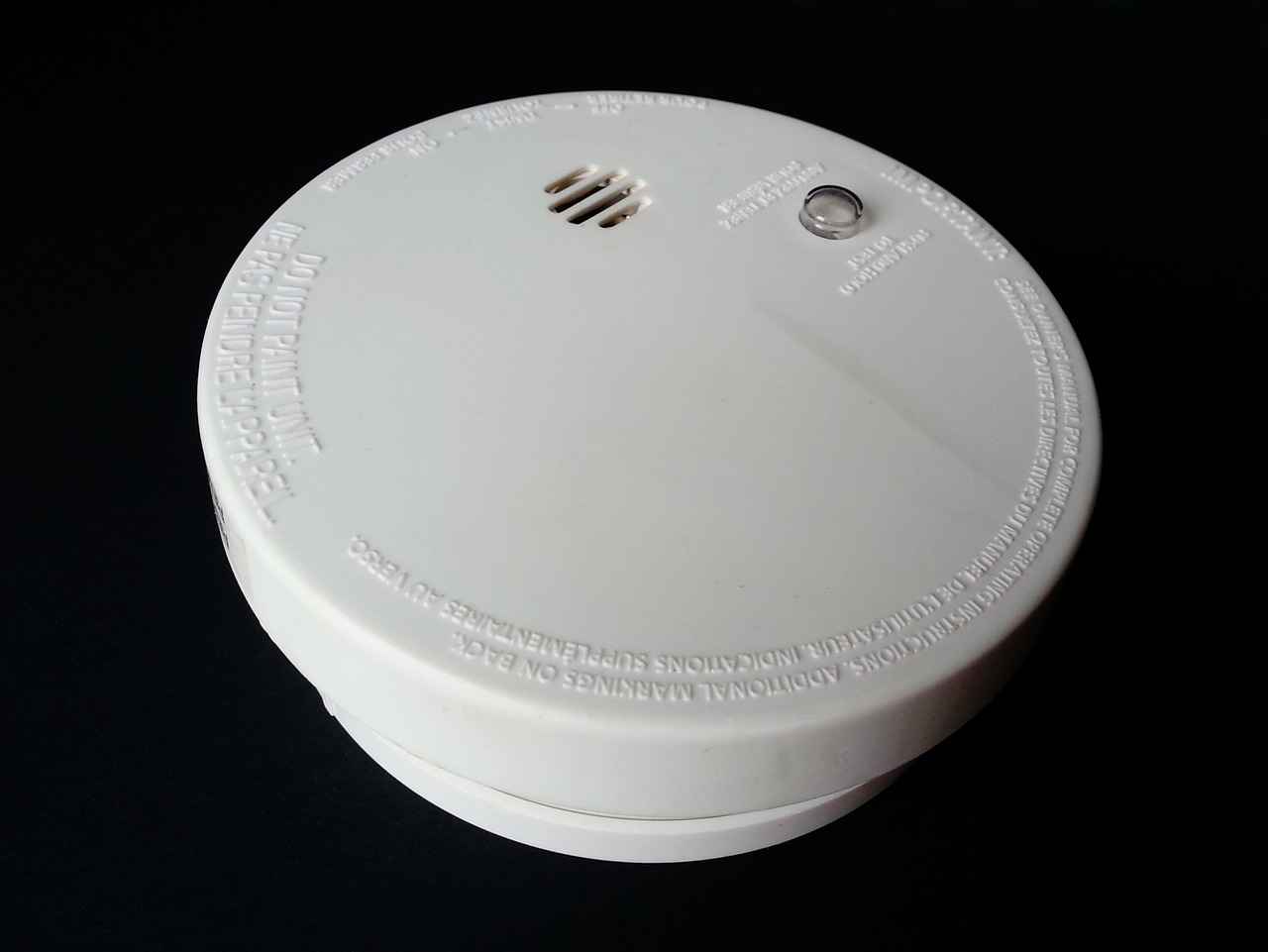This article provides a detailed guide on testing a throttle position sensor (TPS), including common symptoms of failure, testing methods, and tips for replacement to ensure optimal vehicle performance.
The throttle position sensor (TPS) is a critical component in modern vehicles, responsible for monitoring the position of the throttle valve. It sends real-time data to the engine control unit (ECU), which adjusts fuel injection and ignition timing accordingly. Understanding how this sensor works is essential for diagnosing performance issues.
Recognizing the signs of a malfunctioning TPS can save you both time and money. Common symptoms include:
- Poor Acceleration: If your vehicle hesitates or struggles to gain speed, the TPS may be malfunctioning.
- Erratic Idle: A fluctuating idle speed can indicate that the TPS is not providing accurate readings.
- Check Engine Light: If the warning light illuminates, it may signal TPS issues among other potential problems.
A malfunctioning TPS can severely impact your vehicle’s performance. It can lead to:
- Reduced Fuel Efficiency: An incorrect fuel-air mixture caused by a faulty TPS can lead to increased fuel consumption.
- Unresponsive Acceleration: If the TPS fails, your vehicle may not respond correctly to throttle inputs, affecting drivability.
Testing the TPS is crucial for an accurate diagnosis. Here are the steps to follow:
Before you begin testing, gather the following tools:
- Multimeter: Essential for measuring voltage and resistance.
- Screwdriver: Needed to remove the sensor from the throttle body.
- Vehicle Service Manual: Provides specifications and wiring diagrams.
Follow these steps to test your TPS effectively:
1. Turn off the ignition and disconnect the battery.2. Remove the TPS from the throttle body.3. Connect the multimeter to the TPS terminals.4. Turn the ignition to the "On" position without starting the engine.5. Slowly move the throttle valve and observe the multimeter readings.6. Compare the readings to the specifications in the service manual.7. If the readings are inconsistent or out of range, the TPS may need replacement.
If testing reveals that the TPS is faulty, replacing it is essential for restoring vehicle performance. Here are some insights on the process:
Selecting a compatible throttle position sensor is crucial. Consider the following factors:
- Brand Reliability: Opt for reputable brands known for quality.
- Specifications: Ensure the replacement matches your vehicle’s requirements.
Proper installation of the new TPS is key to functionality. Follow these tips:
- Clean the Mounting Surface: Ensure the area is free of debris before installation.
- Secure Connections: Make sure all electrical connections are tight to prevent future issues.
- Test After Installation: After replacing the TPS, retest to confirm proper function.

What is a Throttle Position Sensor (TPS)?
The throttle position sensor (TPS) is an essential component of modern vehicles, playing a pivotal role in engine management and performance. By accurately monitoring the position of the throttle valve, the TPS provides crucial data to the engine control unit (ECU). This data is vital for optimizing fuel injection and ignition timing, ensuring that the engine runs smoothly and efficiently.
Understanding the function of the throttle position sensor is crucial for diagnosing issues. This sensor continuously tracks the position of the throttle valve, which controls the amount of air entering the engine. When the driver presses the accelerator pedal, the throttle opens, allowing more air into the engine. The TPS sends a corresponding signal to the ECU, which adjusts the fuel mixture accordingly to maintain optimal performance.
The TPS operates using a variable resistor that changes its resistance based on the throttle position. As the throttle valve opens and closes, the sensor generates a voltage signal that varies in proportion to the throttle position. This signal is then transmitted to the ECU, which interprets the data to make real-time adjustments to fuel delivery and ignition timing.
The TPS is vital for several reasons:
- Fuel Efficiency: An accurate TPS ensures the engine receives the correct air-fuel mixture, optimizing fuel consumption.
- Engine Performance: Proper throttle response enhances acceleration and overall vehicle performance.
- Emissions Control: A functioning TPS helps maintain the correct air-fuel mixture, reducing harmful emissions.
Identifying the signs of a malfunctioning TPS can save you time and money. Common symptoms include:
- Poor Acceleration: A faulty TPS can lead to sluggish acceleration or unresponsive throttle.
- Erratic Idle: If the engine idle is inconsistent, it may indicate a problem with the TPS.
- Check Engine Light: A warning light on the dashboard can signify TPS issues, prompting further investigation.
Testing the TPS is essential for accurate diagnosis. Here’s a step-by-step guide:
1. Gather necessary tools: multimeter, screwdriver, and vehicle service manual.2. Locate the TPS on the throttle body.3. Disconnect the TPS connector.4. Use a multimeter to measure voltage output while moving the throttle.5. Compare readings with manufacturer specifications.
If testing reveals that the TPS is faulty, replacing it is crucial for restoring vehicle performance. Here are some tips:
- Choosing the Right Replacement Sensor: Ensure compatibility with your vehicle model and consider reputable brands.
- Installation Tips: Follow guidelines in the service manual and ensure connections are secure to avoid future issues.
In summary, the throttle position sensor is a vital component that significantly impacts engine performance and efficiency. Regular checks and timely replacements can prevent major issues, ensuring your vehicle operates at its best.

Common Symptoms of a Failing Throttle Position Sensor
When it comes to maintaining your vehicle, being aware of the common symptoms of a failing throttle position sensor (TPS) can save you both time and money. The TPS plays a critical role in regulating engine performance, and any malfunction can lead to significant issues. Below, we explore the various signs that indicate your TPS may be on the fritz.
- Poor Acceleration: One of the first signs of a malfunctioning TPS is a noticeable decline in acceleration. If you find that your vehicle struggles to gain speed or hesitates when you press the accelerator, it could be due to an inaccurate signal being sent to the engine control unit (ECU).
- Erratic Idle: A failing TPS can cause your engine to idle inconsistently. You may notice fluctuations in engine RPMs, leading to a rough or unstable idle. This symptom can be particularly concerning as it affects the overall drivability of the vehicle.
- Check Engine Light Warnings: If your vehicle’s check engine light illuminates, it’s a sign that something is amiss. A malfunctioning TPS often triggers this warning, indicating that the sensor needs immediate attention. It’s advisable to get a diagnostic scan to pinpoint the exact issue.
- Engine Stalling: A faulty TPS can lead to unexpected engine stalls, especially during acceleration or when coming to a stop. This can pose a serious safety risk, as it may happen without warning.
- Reduced Fuel Efficiency: If you notice a sudden drop in fuel efficiency, it may be due to an incorrect fuel-air mixture caused by a malfunctioning TPS. This can lead to increased fuel consumption and higher costs at the pump.
- Unresponsive Throttle: In some cases, you may find that your throttle becomes unresponsive. This means that pressing the accelerator does not yield the expected response from the engine, which can be both frustrating and dangerous.
Recognizing these symptoms early can help you address potential issues before they escalate into more costly repairs. If you experience any of these signs, it is crucial to perform a thorough diagnostic test on your TPS. Ignoring these indicators may lead to further complications, affecting not only your vehicle’s performance but also your safety on the road.
In summary, being vigilant about the symptoms of a failing throttle position sensor can significantly enhance your vehicle maintenance routine. Regular checks and timely interventions can help ensure that your vehicle runs smoothly and efficiently.
How Does a Failing TPS Affect Vehicle Performance?
Understanding the impact of a failing Throttle Position Sensor (TPS) is essential for any vehicle owner. The TPS plays a critical role in engine performance by monitoring the position of the throttle valve, which controls the amount of air entering the engine. When this sensor malfunctions, it can lead to a range of performance issues that not only affect driving comfort but can also compromise safety.
A malfunctioning TPS can lead to several noticeable performance issues in your vehicle. These may include:
- Reduced Fuel Efficiency: A faulty TPS can disrupt the fuel-air mixture, causing the engine to consume more fuel than necessary. This inefficiency can significantly increase your fuel expenses.
- Unresponsive Acceleration: Drivers may experience a delay in acceleration response, making it challenging to control the vehicle effectively. This can be particularly dangerous in situations requiring quick acceleration.
- Erratic Engine Idling: If the TPS is not providing accurate readings, the engine may idle inconsistently, leading to a rough driving experience.
- Engine Stalling: In severe cases, a failing TPS can cause the engine to stall unexpectedly, posing serious safety risks.
When the TPS is malfunctioning, it can lead to an incorrect fuel-air mixture. This results in the engine not operating at its optimal efficiency, which can severely impact fuel economy. The engine control unit (ECU) relies on accurate TPS readings to adjust fuel delivery. If the sensor is faulty, it may either over-fuel or under-fuel the engine, leading to wasted fuel and increased emissions.
Yes, a faulty TPS can cause engine stalling. The TPS is essential for providing real-time feedback to the ECU about the throttle position. If the sensor fails, the ECU may not receive the correct information, which can result in the engine cutting off or stalling, especially during low-speed maneuvers or when idling. This can be particularly hazardous in traffic or at stoplights.
Being aware of the signs of a failing TPS can help you address issues before they escalate. Common symptoms include:
- Check Engine Light: A malfunctioning TPS often triggers the check engine light, indicating that the vehicle requires diagnostic attention.
- Poor Acceleration: If you notice a lag in acceleration or an inability to gain speed smoothly, it might be time to check the TPS.
- Inconsistent Idle: A rough or fluctuating idle can signal that the TPS is not functioning correctly.
Diagnosing a failing TPS involves using a multimeter to check the voltage output of the sensor. You can also use an OBD-II scanner to read any trouble codes that may indicate TPS issues. Regular maintenance and checks can help identify problems early, ensuring that your vehicle remains safe and efficient.
In conclusion, understanding how a failing TPS affects vehicle performance is crucial for maintaining your car’s efficiency and safety. By recognizing the symptoms and knowing how to diagnose the issue, you can take proactive steps to ensure optimal vehicle performance.
Impact on Fuel Economy
When it comes to maintaining your vehicle’s efficiency, understanding the role of the throttle position sensor (TPS) is crucial. A malfunctioning TPS can lead to significant issues, particularly regarding fuel economy. This section delves into the impact of a faulty TPS on fuel efficiency and overall vehicle performance.
The throttle position sensor is responsible for monitoring the position of the throttle plate in the engine’s intake manifold. When the TPS is functioning correctly, it provides the engine control unit (ECU) with accurate data about the throttle’s position. This information is vital for adjusting the fuel-air mixture. However, when the sensor is faulty, it can cause incorrect fuel-air mixture ratios, leading to decreased fuel efficiency.
- Poor Acceleration: If your vehicle struggles to accelerate, it may be due to incorrect signals sent by the TPS.
- Unstable Idle: A malfunctioning TPS can cause your engine to idle erratically, which can also impact fuel consumption.
- Check Engine Light: Often, a faulty TPS will trigger the check engine light, indicating that something is wrong.
The fuel-air mixture is crucial for optimal combustion in the engine. A proper mixture ensures that the engine runs smoothly and efficiently. When the TPS fails, it can lead to a rich fuel mixture (too much fuel) or a lean mixture (too little fuel). Both scenarios can result in poor fuel economy:
- Rich Mixture: Leads to excessive fuel consumption and can cause the engine to produce more emissions.
- Lean Mixture: Can result in engine knocking and overheating, ultimately harming the engine.
Continuing to drive with a faulty TPS can lead to more than just poor fuel economy. Over time, the engine may suffer from increased wear and tear due to improper combustion. Additionally, it can lead to:
- Increased emissions- Higher repair costs- Reduced engine lifespan
If you suspect that your TPS is malfunctioning, it’s essential to address the issue promptly. Regular maintenance and diagnostics can help identify problems early. Consider the following steps:
- Regular Diagnostics: Use an OBD-II scanner to check for error codes related to the TPS.
- Visual Inspection: Check for any physical damage to the sensor and its wiring.
- Replacement: If diagnostics confirm a faulty TPS, replacing it is crucial for restoring fuel efficiency.
In summary, a faulty throttle position sensor can significantly impact your vehicle’s fuel economy and overall performance. By understanding the symptoms and addressing the issues promptly, you can ensure your vehicle runs efficiently and effectively.
Engine Stalling and Rough Idling
The performance of your vehicle is closely tied to the functionality of its components, and one critical element is the throttle position sensor (TPS). When the TPS fails, it can lead to engine stalling and rough idling, which are symptoms that should not be ignored. Understanding how these symptoms manifest and their implications for vehicle safety is essential for any vehicle owner.
Engine stalling occurs when the engine unexpectedly shuts off, often while the vehicle is in motion. This can be alarming and dangerous, especially in traffic. Rough idling, on the other hand, is characterized by an uneven or fluctuating engine speed when the vehicle is stationary. Both issues can be attributed to a malfunctioning TPS, which fails to accurately relay the position of the throttle valve to the engine control unit (ECU).
- Inconsistent Throttle Response: Drivers may notice that the vehicle does not accelerate smoothly or responds sluggishly when the accelerator pedal is pressed.
- Stalling: The engine may stall unexpectedly, especially when coming to a stop or during low-speed driving.
- Rough Idling: The engine may idle roughly, causing vibrations and discomfort when the vehicle is stationary.
- Check Engine Light: A malfunctioning TPS often triggers the check engine light, indicating a need for immediate attention.
The implications of a failing TPS extend beyond mere inconvenience. Engine stalling can lead to dangerous situations, particularly if it occurs while driving at high speeds or in busy traffic. Rough idling can also affect the driver’s control over the vehicle, making it difficult to maintain a steady speed. These symptoms not only compromise safety but can also lead to further mechanical issues if not addressed promptly.
If you experience any of these symptoms, it is crucial to diagnose the problem accurately. Start by checking for diagnostic trouble codes (DTCs) using an OBD-II scanner. If the TPS is indeed at fault, it will need to be tested and potentially replaced. Replacing a faulty TPS can restore proper throttle response, improve engine performance, and enhance overall vehicle safety.
To prevent TPS-related issues, regular vehicle maintenance is key. Ensure that your vehicle undergoes routine inspections, and pay attention to any warning signs. Keeping the throttle body clean and ensuring that electrical connections to the TPS are secure can also help in maintaining optimal performance.
In conclusion, understanding the symptoms and implications of a failing throttle position sensor is vital for any vehicle owner. By being proactive and addressing issues like engine stalling and rough idling, you can ensure a safer and more reliable driving experience.
Diagnosing a Throttle Position Sensor Issue
Diagnosing a throttle position sensor (TPS) issue is a critical step in maintaining your vehicle’s performance. The TPS plays a vital role in regulating the engine’s air-fuel mixture by monitoring the position of the throttle valve. If the TPS malfunctions, it can lead to a range of issues, from poor acceleration to increased fuel consumption. This section will provide you with essential tools and a detailed step-by-step process for testing the TPS to determine if it needs replacement.
Testing the TPS is essential for accurate diagnosis. A faulty TPS can lead to various performance issues, affecting your vehicle’s drivability and fuel efficiency. By identifying the problem early, you can save on costly repairs and ensure your vehicle runs smoothly.
- Multimeter: This tool is crucial for measuring voltage and resistance.
- Screwdriver: Used for removing the sensor from its mounting.
- Vehicle Service Manual: Provides specific details about the TPS and its specifications.
- Safety Gear: Gloves and safety glasses to protect yourself during testing.
1. **Safety First:** Ensure the vehicle is turned off and parked on a level surface. Disconnect the battery to avoid electrical shocks.2. **Locate the TPS:** Refer to your vehicle service manual to find the throttle position sensor, usually located on the throttle body.3. **Inspect the Sensor:** Check for any visible damage or loose connections. Clean any dirt or debris around the sensor for accurate readings.4. **Connect the Multimeter:** Set your multimeter to the appropriate voltage range. Connect the positive lead to the TPS signal wire and the negative lead to a ground point.5. **Turn on the Ignition:** Without starting the engine, turn the ignition key to the 'on' position. This will power the TPS.6. **Read the Voltage:** Slowly open the throttle plate. The voltage should increase smoothly as the throttle opens. Note any irregularities or sudden jumps in voltage.7. **Check Resistance:** If the voltage readings are inconsistent, switch the multimeter to the resistance setting. Measure the resistance across the TPS terminals while moving the throttle plate.8. **Analyze Results:** Compare your readings to the specifications in the vehicle service manual. If the readings fall outside the acceptable range, the TPS may need replacement.
If testing reveals that the TPS is faulty, replacing it is crucial for restoring vehicle performance. Ensure you choose a compatible replacement sensor that meets your vehicle’s specifications. Refer to your service manual for guidance on installation, and follow the tips provided to enhance the lifespan of the new sensor.
- How often should I test my TPS? Regular checks during routine maintenance can help catch issues early.
- Can I test the TPS without a multimeter? While it’s possible to visually inspect the sensor, a multimeter provides more accurate diagnostics.
- What are the signs of a failing TPS? Look for symptoms like poor acceleration, erratic idling, and warning lights on your dashboard.
By following this guide, you can effectively diagnose and address any issues with your throttle position sensor, ensuring your vehicle operates at its best.

Step-by-Step Guide to Testing the Throttle Position Sensor
This step-by-step guide aims to provide a thorough understanding of how to test a throttle position sensor (TPS). The TPS plays a crucial role in vehicle performance by monitoring the position of the throttle valve. Accurate testing of this sensor is essential for diagnosing potential issues that could affect your vehicle’s operation. Below, we outline the necessary tools, safety precautions, and detailed instructions to ensure effective testing.
Testing the TPS is vital for maintaining optimal vehicle performance. A malfunctioning TPS can lead to a variety of issues, including poor acceleration and increased fuel consumption. By following this guide, you can identify whether your TPS is functioning correctly or if it requires replacement.
- Multimeter: This tool is essential for measuring voltage and resistance.
- Screwdriver: A basic tool for removing the TPS from its mounting.
- Vehicle Service Manual: This manual provides specific information related to your vehicle model.
- Safety Glasses: Protect your eyes during the testing process.
Before starting the testing process, ensure the vehicle is parked on a flat surface and the engine is turned off. Always wear safety glasses to protect your eyes from any debris. Disconnect the battery to prevent any electrical shocks while working on the TPS.
Follow these detailed steps to accurately test the throttle position sensor:
- Locate the TPS: Refer to your vehicle service manual to find the exact location of the TPS.
- Disconnect the Electrical Connector: Carefully unplug the connector from the TPS.
- Set Up the Multimeter: Set your multimeter to the voltage setting.
- Test the Voltage: With the ignition on (but the engine off), probe the TPS connector terminals with the multimeter. You should see a specific voltage range as indicated in your service manual.
- Check the Throttle Movement: Slowly open and close the throttle while monitoring the multimeter. The voltage should change smoothly without any drops or spikes.
- Analyze the Results: If the readings are inconsistent or out of range, the TPS may be faulty and require replacement.
If your testing indicates that the TPS is malfunctioning, it is essential to replace it to restore your vehicle’s performance. Here are some tips for choosing and installing a new TPS:
When selecting a replacement TPS, consider the following factors:
- Compatibility: Ensure the sensor is compatible with your vehicle make and model.
- Brand Reliability: Opt for sensors from reputable manufacturers known for quality.
- Specifications: Check the specifications to meet or exceed OEM standards.
Proper installation is crucial for the functionality of the new TPS. Here are some practical tips:
- Follow the Manual: Always refer to your vehicle service manual for specific installation instructions.
- Ensure Proper Alignment: Align the sensor correctly before tightening the screws to avoid misalignment.
- Reconnect the Wiring: Carefully reconnect the electrical connector, ensuring it is secure.
By following this comprehensive guide, you can effectively test and replace your throttle position sensor, ensuring your vehicle operates at its best.
Tools Required for Testing
When it comes to testing the throttle position sensor (TPS), having the right tools is absolutely essential for achieving accurate and reliable results. The TPS plays a critical role in your vehicle’s performance, and ensuring that it functions properly is key to maintaining optimal engine operation. This section will guide you through the necessary tools and their significance in the testing process.
Before you begin testing the TPS, it is important to gather the following essential tools:
- Multimeter: This tool is crucial for measuring the voltage and resistance of the TPS. A multimeter allows you to check the electrical signals sent from the sensor to the engine control unit (ECU), helping you identify any irregularities.
- Screwdriver: A screwdriver is necessary for removing the TPS from its mounting position. Depending on your vehicle, you may need a flathead or Phillips screwdriver, so ensure you have both types available.
- Vehicle Service Manual: Having the service manual specific to your vehicle model is invaluable. It provides detailed instructions, wiring diagrams, and specifications that are essential for accurate testing and reinstallation of the TPS.
- Wrench Set: A set of wrenches may be required to disconnect any components blocking access to the TPS. Ensure you have both metric and standard sizes to accommodate various fasteners.
- Safety Gear: Always prioritize safety. Wear gloves and safety glasses to protect yourself from potential hazards during the testing process.
The importance of using the right tools cannot be overstated. A multimeter is especially vital since it allows you to assess the sensor’s performance accurately. Incorrect voltage readings can lead to misdiagnosis, resulting in unnecessary repairs or replacements.
Additionally, the vehicle service manual serves as a roadmap during the testing process. It not only guides you through the steps but also provides specific details about the TPS’s specifications, ensuring that you are testing it according to the manufacturer’s standards.
Using the appropriate screwdrivers and wrenches helps prevent damage to the sensor and surrounding components. This is crucial because a damaged TPS can lead to further complications and costly repairs.
In summary, gathering these essential tools before starting the testing process is fundamental to achieving accurate results. By ensuring you have a multimeter, screwdriver, vehicle service manual, wrench set, and safety gear, you set yourself up for success in diagnosing the throttle position sensor effectively.
Remember, taking the time to prepare properly will not only enhance the accuracy of your testing but also contribute to the overall longevity and performance of your vehicle.
Testing Procedure Explained
To ensure the throttle position sensor (TPS) is functioning correctly, it is essential to follow a systematic testing procedure. This guide outlines the necessary steps to accurately assess the TPS’s performance and diagnose any potential issues. By adhering to these steps, you will gain clarity and precision in determining the sensor’s functionality.
- Step 1: Gather Required Tools
- Multimeter
- Screwdriver set
- Vehicle service manual
- Safety gloves and goggles
- Step 2: Safety Precautions
Before commencing the testing process, ensure the vehicle is parked on a flat surface. Engage the parking brake and disconnect the battery to prevent any electrical mishaps during the procedure.
- Step 3: Locate the TPS
Refer to the vehicle service manual to locate the throttle position sensor. Typically, it is situated on the throttle body, connected to the intake manifold.
- Step 4: Inspect the Sensor and Wiring
Before testing, visually inspect the TPS and its wiring for any signs of damage, corrosion, or loose connections. Address any visible issues before proceeding.
- Step 5: Connect the Multimeter
Set your multimeter to the voltage setting. Connect the positive lead to the TPS signal wire and the negative lead to the ground. This setup will allow you to measure the voltage output of the sensor.
- Step 6: Test the Voltage Output
With the ignition turned on (but the engine off), check the voltage reading on the multimeter. A properly functioning TPS should provide a specific voltage range, typically between 0.5 to 4.5 volts. Refer to your vehicle’s specifications for exact values.
- Step 7: Check for Smooth Voltage Changes
Gradually open the throttle by hand while observing the multimeter. The voltage should increase smoothly and consistently. If the readings are erratic or do not change as expected, the TPS may be faulty.
- Step 8: Reassemble and Test Drive
After completing the tests, disconnect the multimeter, reattach any connectors, and secure the TPS. Reconnect the battery and start the vehicle. Take it for a test drive to observe if performance issues persist.
By following this detailed procedure, you can effectively test the throttle position sensor and diagnose any underlying issues. Remember, a faulty TPS can lead to significant performance problems, so timely testing and replacement are crucial for maintaining optimal vehicle operation.

Replacing a Faulty Throttle Position Sensor
If testing indicates that your throttle position sensor (TPS) is faulty, it is essential to replace it promptly to restore your vehicle’s performance. A malfunctioning TPS can lead to various issues, including poor acceleration and decreased fuel efficiency. This section will guide you through selecting the right replacement sensor and the installation process, ensuring your vehicle runs smoothly.
When selecting a replacement TPS, several factors should be considered to ensure compatibility and performance:
- Compatibility: Always check your vehicle’s service manual or consult with a professional to confirm the correct part number for your specific make and model.
- Brand Reliability: Opt for reputable brands known for quality and durability. Brands like Bosch, ACDelco, and Denso are often recommended.
- Specifications: Ensure that the replacement sensor meets the specifications required by your vehicle’s ECU. This includes the voltage range and physical dimensions.
- Warranty: Look for products that come with a warranty, as this can provide peace of mind regarding the quality and longevity of the part.
Proper installation of the new throttle position sensor is crucial for its functionality. Follow these steps to ensure a successful installation:
1. Gather Necessary Tools: You will need a socket set, screwdriver, and possibly a torque wrench, depending on your vehicle.2. Disconnect the Battery: Safety first! Disconnect the negative terminal of the battery to prevent any electrical issues.3. Locate the TPS: The TPS is typically located on the throttle body. Refer to your vehicle's manual for precise location details.4. Remove the Old Sensor: Unscrew the bolts or screws holding the old TPS in place. Carefully disconnect the wiring harness.5. Install the New Sensor: Align the new TPS in the correct position and secure it with the screws. Reconnect the wiring harness.6. Reconnect the Battery: Once everything is in place, reconnect the negative terminal of the battery.7. Test the New Sensor: Start your vehicle and check for any warning lights. Ensure the throttle responds correctly during acceleration.
By following these steps, you can effectively replace your faulty throttle position sensor and restore proper vehicle performance. Remember, if you are uncertain about any part of the process, it is always best to consult with a professional mechanic to avoid potential issues.
- Forgetting to Disconnect the Battery: Failing to disconnect the battery can lead to electrical shorts or damage to the new sensor.
- Incorrect Torque Settings: Over-tightening or under-tightening screws can affect the sensor’s performance. Always refer to the manufacturer’s specifications.
- Neglecting to Clear Error Codes: After installation, use an OBD-II scanner to clear any error codes from the ECU to ensure proper functionality.
In conclusion, replacing a faulty throttle position sensor is a vital step in maintaining your vehicle’s performance. By carefully selecting a compatible replacement and following the proper installation procedures, you can enhance your vehicle’s efficiency and driving experience.
Choosing the Right Replacement Sensor
Selecting a compatible throttle position sensor (TPS) is essential for ensuring your vehicle operates at its best. When it comes to purchasing a replacement, several factors come into play. Understanding these factors can help you make an informed decision and avoid potential issues down the line.
- Brand Reliability: Opting for a reputable brand can significantly impact the performance and longevity of your TPS. Well-known manufacturers often provide products that meet stringent quality standards, ensuring reliability and durability.
- Specifications: Always check the specifications of the TPS to ensure it matches your vehicle’s requirements. This includes voltage range, resistance, and connector type. Mismatched specifications can lead to poor vehicle performance.
- OEM vs. Aftermarket: Original Equipment Manufacturer (OEM) sensors are designed specifically for your vehicle model, while aftermarket sensors may offer cost savings but could vary in quality. Assess the pros and cons of each option before making a choice.
- Warranty: A good warranty can provide peace of mind. Look for sensors that come with a warranty, as this indicates the manufacturer’s confidence in their product.
- Customer Reviews: Reading customer reviews can give you insights into the real-world performance of a TPS. Look for feedback regarding installation ease, performance, and longevity from other vehicle owners.
When selecting a TPS, it is also important to consider the vehicle’s make and model. Different vehicles may require specific TPS designs and functionality. Consulting your vehicle’s service manual can provide invaluable information about the correct sensor type needed for your specific engine configuration.
Additionally, consider the price. While it may be tempting to go for the cheapest option, investing in a slightly more expensive, high-quality sensor can save you money in the long run by reducing the risk of premature failure.
In summary, choosing the right replacement throttle position sensor is a critical step in maintaining your vehicle’s performance. By focusing on brand reliability, specifications, warranty, and customer feedback, you can ensure that you select a sensor that meets your needs and enhances your vehicle’s overall functionality.
Make sure to consult with a professional mechanic if you have any doubts about the compatibility of the sensor you are considering. They can provide expert advice tailored to your specific vehicle and driving requirements.
Installation Tips for the New Sensor
When it comes to replacing your throttle position sensor (TPS), proper installation is crucial for ensuring that your vehicle operates efficiently. A well-installed TPS not only enhances the sensor’s functionality but also contributes to the overall longevity of the component. Below are some practical tips and precautions to follow during the installation process.
- Gather Necessary Tools: Before starting the installation, ensure you have all the required tools at hand. Commonly needed tools include a socket set, a torque wrench, and electrical contact cleaner. Having everything ready will help streamline the process.
- Disconnect the Battery: To prevent any electrical shorts or shocks, always disconnect the vehicle’s battery before beginning the installation. This is a critical safety measure that should never be overlooked.
- Remove the Old Sensor Carefully: When taking out the old TPS, be gentle to avoid damaging surrounding components. Use the appropriate socket size to remove screws or bolts, and take note of the orientation of the old sensor for correct installation of the new one.
- Inspect the Wiring Harness: Before installing the new TPS, inspect the wiring harness for any signs of wear or damage. Faulty wiring can lead to poor sensor performance, so it’s important to ensure that the connections are clean and secure.
- Align the New Sensor: When installing the new TPS, make sure it is aligned correctly with the throttle body. Misalignment can lead to inaccurate readings and poor vehicle performance. Follow the manufacturer’s specifications for proper alignment.
- Torque Specifications: Use a torque wrench to tighten the screws or bolts to the manufacturer’s specified torque settings. Over-tightening can damage the sensor or the throttle body, while under-tightening can lead to sensor movement and inaccurate readings.
- Reconnect the Battery: After the installation is complete, reconnect the battery. Ensure that all connections are secure and that there are no exposed wires.
- Test the New Sensor: Once everything is reconnected, start the vehicle and check for any warning lights on the dashboard. Use a diagnostic tool to verify that the new TPS is functioning correctly and providing accurate readings to the engine control unit (ECU).
Following these installation tips will not only ensure that your new throttle position sensor operates effectively but also extend its lifespan. Remember, taking the time to install the sensor correctly can save you from future headaches and costly repairs. Always refer to your vehicle’s service manual for specific instructions and recommendations related to your make and model.
In conclusion, investing effort into the installation process pays off in the long run. A properly installed TPS can significantly enhance your vehicle’s performance, ensuring smoother acceleration and better fuel efficiency. By adhering to these guidelines, you can confidently replace your throttle position sensor and enjoy a well-functioning vehicle.
Frequently Asked Questions
- What are the signs of a failing throttle position sensor?
Common symptoms include poor acceleration, erratic idling, and the check engine light illuminating. If you notice your vehicle hesitating or stalling, it’s time to investigate the TPS.
- How do I test a throttle position sensor?
To test a TPS, you’ll need a multimeter. Start by disconnecting the sensor and checking the resistance across its terminals. Follow the specific voltage readings as outlined in your vehicle’s service manual for accurate results.
- Can I drive with a faulty throttle position sensor?
While it’s technically possible to drive with a malfunctioning TPS, it’s not advisable. Doing so can lead to poor fuel economy and may even cause stalling, which can be dangerous on the road.
- How often should I replace my throttle position sensor?
There’s no set timeline for replacing a TPS, but if you experience performance issues or the sensor fails a test, it’s best to replace it immediately to maintain optimal vehicle performance.
- What should I look for when buying a replacement throttle position sensor?
When purchasing a new TPS, consider brand reliability, compatibility with your vehicle model, and customer reviews. Ensuring you get a quality sensor can save you headaches down the road.




